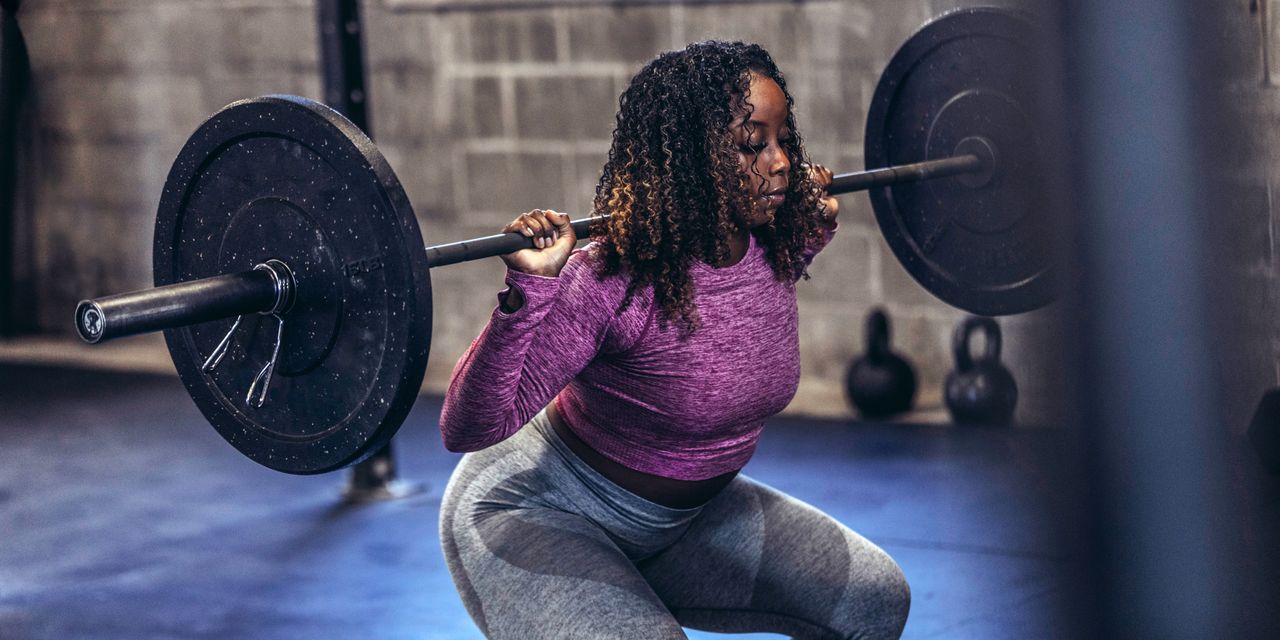Blog
Why the 5×5 Workout Might Be the Key to Serious Strength Gains

What’s more, you’re able to make the tiniest increases in load with a barbell. Your gym might not stock dumbbells or kettlebells that go up in 2.5-pound increments, but there’s a good chance it has weight plates of that size available. In turn, it’s easier to stick to the five-rep standard while progressing safely.
2. It takes a significant amount of time.
Do you crave fast-paced workouts that last half an hour, max? The repetitive 5×5 workout might feel painfully slow, says Su. So some folks may be tempted to cut the (significant) rest between sets to move things along, but if you do so, you’d be messing with one of the core tenets of 5×5.
“You’re probably not going to be able to push the intensity as much as you could to elicit muscle growth or strength gains,” Su says.
3. It can leave some gaps in your fitness.
The 5×5 workout blueprint can help you make major strength strides with your barbell lifts. But it overlooks some of the other elements of fitness that make you a well-rounded athlete, like speed, agility, and power, says Myers. There’s no unilateral (a.k.a. single-sided) work or movement through all three planes of motion (think: moving forward and backward, side to side, and rotationally), and with its focus on compound exercises, smaller muscles may not get the attention they need, she explains. “If you only do those lifts, we’re kind of ignoring some stuff,” she says. This can be a problem, since giving these supporting muscles some love in your workouts can help support joint stability and protect from injury. Plus, training in all three dimensions can make real-life 3D activities, whether it’s gardening or hiking, feel more effortless.
How to start the 5×5 workout plan—and adjust it for your needs.
While you could do every exercise in your workout as a 5×5, it’s not always the most efficient (or mentally invigorating) approach. Instead, program one to three barbell exercises using the 5×5 blueprint, then round out your training day with accessory work.
Consider this sample lower-body training session: Start the workout with a couple sets of a few reps of a power-focused, nervous system-priming exercise (say, box jumps). Then, do a 5×5-style back squat—your main, strength-bolstering lift. Follow up with three sets of eight to 12 reps of accessory movements (e.g., single-leg deadlifts, split squats), suggests Sak-Ocbina. “You basically move from the most risky movements down to the least risky movements within a workout,” she says. “And the things that you’re most fatigued for, you’re not risking injury, but you’re also not necessarily gonna need as much energy or brain power.”
Instead of a lower-body day, you might structure it as a push day or a pull day, adds Myers. In the latter case, you might do a barbell deadlift and bent-over row as your main 5×5 workout lifts, with Nordic hamstring curls and reverse flies as your accessory moves.
The 5×5 is a high-volume program; between the low reps, high number of sets, and heavy weights, there’s a hefty amount of work performed. And that means it can also be a high-fatigue program, says Myers. In between sets, rest for at least two to five minutes so you’re able to continue pushing that heavy barbell. Outside of the gym, make sure you’re fueling properly and take two to three days to recover between 5×5 workouts of the same muscle group, suggests Su.
The bottom line on the 5×5 workout
The 5×5 workout framework is just that—a blueprint. Use it to guide your training when you’re ready to start lifting heavier and growing your strength. To check off all your boxes, make sure to also plug in exercises that require you to be explosive, move through different planes of motion, and call on all the smaller muscles throughout your body.












